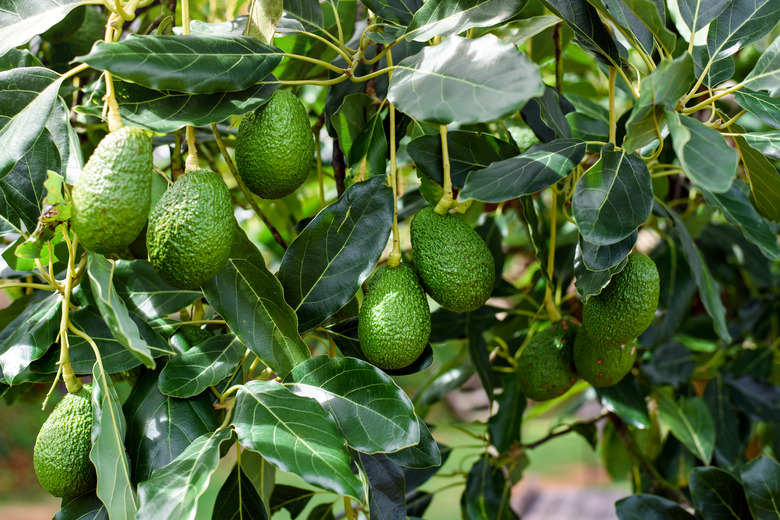What Is The Difference Between A Male And Female Avocado Plant?
We may receive a commission on purchases made from links.
If you think guacamole is as remarkable as avocados get, you are in for a surprise. Whether you grow them outdoors in your garden or indoors in a pot, the avocado plant (Persea americana, USDA zones 10-12) does epic sexual tricks worthy of the history books, if not the Kama Sutra. Each flower contains both male and female sexual parts, but they operate sequentially, female one day, male the second.
Sex and the Single Plant
Sex and the Single Plant
Birds do it, bees do it and plants do it too. You may find nothing sexy about a backyard bloom producing seed, but generally seeds result from the same type of behavior that leads to animal babies: Pollen produced by a male plant finds its way into the female plant to fertilize the ovary.
If a plant produces only male flowers, gardeners call it a "male plant," while "female plants" grow only female flowers. Botanists call these plants, with their distinctly separate male and female specimens, dioecious. But many plants, like the evergreen avocado tree, are not so easily button-holed and don't fit into the simple male/female paradigm.
More Than Perfect
More Than Perfect
Many species produce both male and female flowers on the same plant, meaning they're not explicitly male or female. Botanists call those plants monoecious, and there are lots of them. They're capable of producing fruit without a second plant for pollination. Some plants take this further and have flowers containing both male and female sexual parts: the male stamens that produce pollen and the female stigma that receive it. These kinds of flowers are called perfect.
Avocado flowers fit this mold but bring a unique twist: The two sexual processes do not operate simultaneously but instead sequentially. Each avocado flower goes through a brief female stage when the stigma opens to receive pollen, followed by a short male stage when the stamens produce pollen.
Female Today, Male Tomorrow
Female Today, Male Tomorrow
A mature avocado tree hangs heavy with panicles of dozens of flowers, potentially producing over a million blossoms each year. Unique in all the botanical kingdom, the avocado flowers undertake a complex, sex-changing dance botanists call synchronous dichogamy: Each bloom opens for two days only.
The first day, the flower's female sexual parts are operational for a few hours, receiving the pollen of other blossoms, then the flower closes up shop. When it reopens the second day, male sexual parts are active. They release pollen to fertilize other flowers, and that's all folks! If the flower was fertilized, it grows into a fruit.
Heat of the Moment
Heat of the Moment
Fortunately, nature is sly about getting her way. If all avocado flowers were female at the same time, pollination would simply not occur. Instead, the flowers fall into two types: One type is female in the morning of its first day, male in the afternoon of the second; the other type is female in the afternoon of its first day, male in the morning of the second. This cross-hatching allows the cross-pollination necessary to produce fruit.
The timing works best when average temperatures stay above 70 degrees Fahrenheit; temperature drops result in irregular flower openings and fruit-set declines. Avocado trees are perennials in U.S. Department of Agriculture plant hardiness zones 10 through 12.
